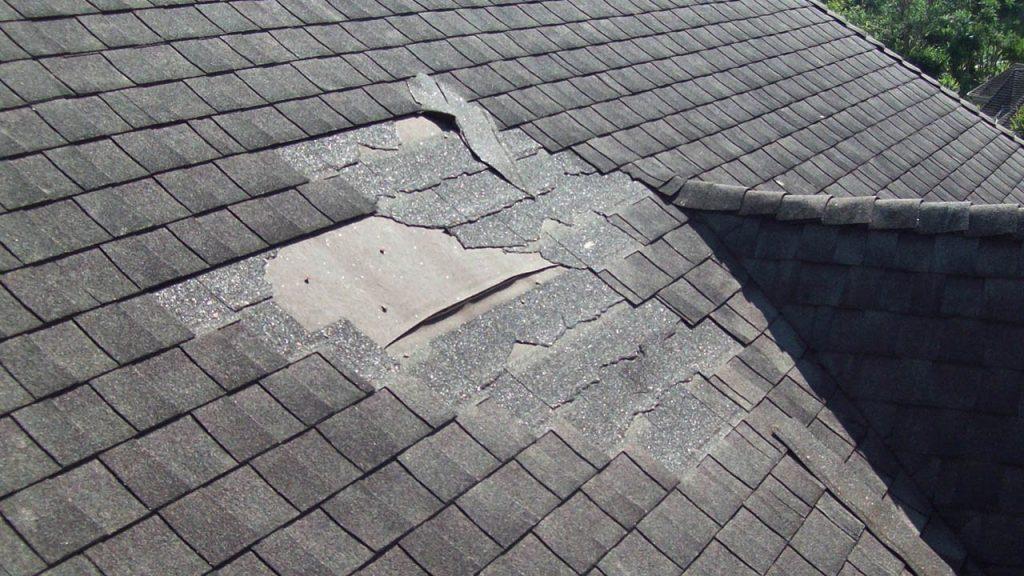Picture this: a gust of wind so strong that it sends shingles from your roof sailing through the air. It’s a scenario that many homeowners have experienced, especially in regions prone to severe weather. When the wind blew shingles off your roof, it can be a cause for concern and prompt the need for immediate repairs. In this article, we’ll delve into the common reasons behind shingle loss due to wind, how to assess the damage, and what steps to take to address this issue effectively.

Understanding Shingle Loss in High Winds
How Does Wind Remove Shingles?
Strong winds can exert tremendous force on your roof, especially if it’s not properly secured. The process of wind removing shingles typically unfolds as follows:
1. Lift and Separation
When high winds occur, they create an uplift force that can get underneath the shingles, causing them to lift and separate from the roof deck. This initial separation can be subtle and may go unnoticed.
2. Continued Uplift
As the wind intensifies or persists, the lifting of shingles can become more pronounced. Wind can get beneath the edges of the shingles, further loosening them.
3. Complete Removal
In the most severe cases, the wind can completely lift and remove shingles from the roof. Once shingles are detached, they can become airborne and pose a hazard to your property and neighboring areas.
Common Reasons for Shingle Loss
Several factors can contribute to the wind-induced loss of shingles:
1. Aging Shingles
Asphalt shingles can deteriorate over time due to exposure to the elements, which can make them more susceptible to wind damage.
2. Poor Installation
Improperly installed shingles may not be adequately secured to the roof deck, making them more vulnerable to wind uplift.
3. Severe Weather
Extreme weather events, such as hurricanes, tornadoes, or severe thunderstorms, can generate the high winds needed to remove shingles.
4. Lack of Maintenance
Neglecting roof maintenance, such as failing to replace damaged or missing shingles, can weaken the overall integrity of the roofing system.
Assessing the Damage
If you suspect that wind has blown shingles off your roof, it’s essential to assess the extent of the damage:
1. Visual Inspection
Perform a visual inspection from the ground using binoculars or by safely ascending a ladder to get a closer look. Look for missing, damaged, or lifted shingles.
2. Interior Inspection
Check your attic or ceiling for signs of water leaks. Missing shingles can allow water to infiltrate your home, potentially causing further damage.
3. Call a Professional
Consider contacting a roofing professional to conduct a thorough inspection. They can identify hidden damage and recommend the necessary repairs.
Addressing Wind-Damaged Shingles
When wind blows shingles off your roof, prompt action is crucial to prevent further damage and protect your home:
1. Temporary Repairs
If you identify missing shingles, you can perform temporary repairs by placing tarps or roofing cement over the exposed areas to prevent water infiltration.
2. Professional Inspection
Arrange for a professional roofing inspection to assess the extent of the damage and determine the best course of action.
3. Repairs or Replacement
Depending on the severity of the damage, repairs or shingle replacement may be necessary. A roofing professional can provide guidance on the most suitable solution.
4. Preventative Measures
To reduce the risk of future wind damage, consider reinforcing your roof’s edges and ensuring proper shingle installation and maintenance.
Conclusion
When the wind blew shingles off your roof, it’s essential to take immediate action to assess and address the damage. Wind-damaged shingles can compromise your roof’s integrity and lead to water leaks and further issues. By understanding the causes of shingle loss and following the steps outlined in this article, you can protect your home and ensure the longevity of your roofing system.



Leave a Reply